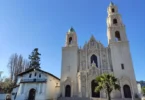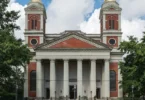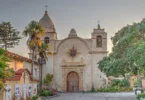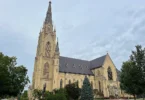Introduction

The Basilica of the Holy Martyrs, also referred to as the Basilica of the Holy Martyrs of Anaunia, the Basilica of Sanzeno, or the Church of Saints Sisinio, Martirio, and Alessandro, is a significant Catholic place of worship located in Sanzeno, a town in the province and archdiocese of Trento, Italy. This basilica is renowned for its historical and religious importance, as it is one of the oldest churches in the Val di Non. The basilica’s construction began in 1480, commissioned by Prince-Bishop Giovanni Hinderbach, who sought to create a place of reverence in honor of the local martyrs. It was built on the site of an earlier church, dating back to the 13th century, a testament to the region’s deep Christian heritage. The church underwent significant changes over the centuries, but its role as a spiritual center for the local community has remained constant.
The Basilica of the Holy Martyrs is especially known for housing two reliquaries that contain the ashes and remains of the holy martyrs Sisinio, Martirio, and Alessandro. These relics, believed to be from their pyre, are of great importance to the faithful, and they attract many pilgrims who come to venerate these courageous figures, who were martyred for their Christian faith. In recognition of its historical, architectural, and spiritual significance, Pope Paul VI elevated the church to the status of a minor basilica in November 1973. This distinction underscores the basilica’s importance not only to the local community but also to the broader Catholic Church, ensuring that its rich religious heritage continues to be celebrated and preserved. Today, the Basilica of the Holy Martyrs stands as a symbol of faith, history, and devotion in the region of Trentino-Alto Adige.
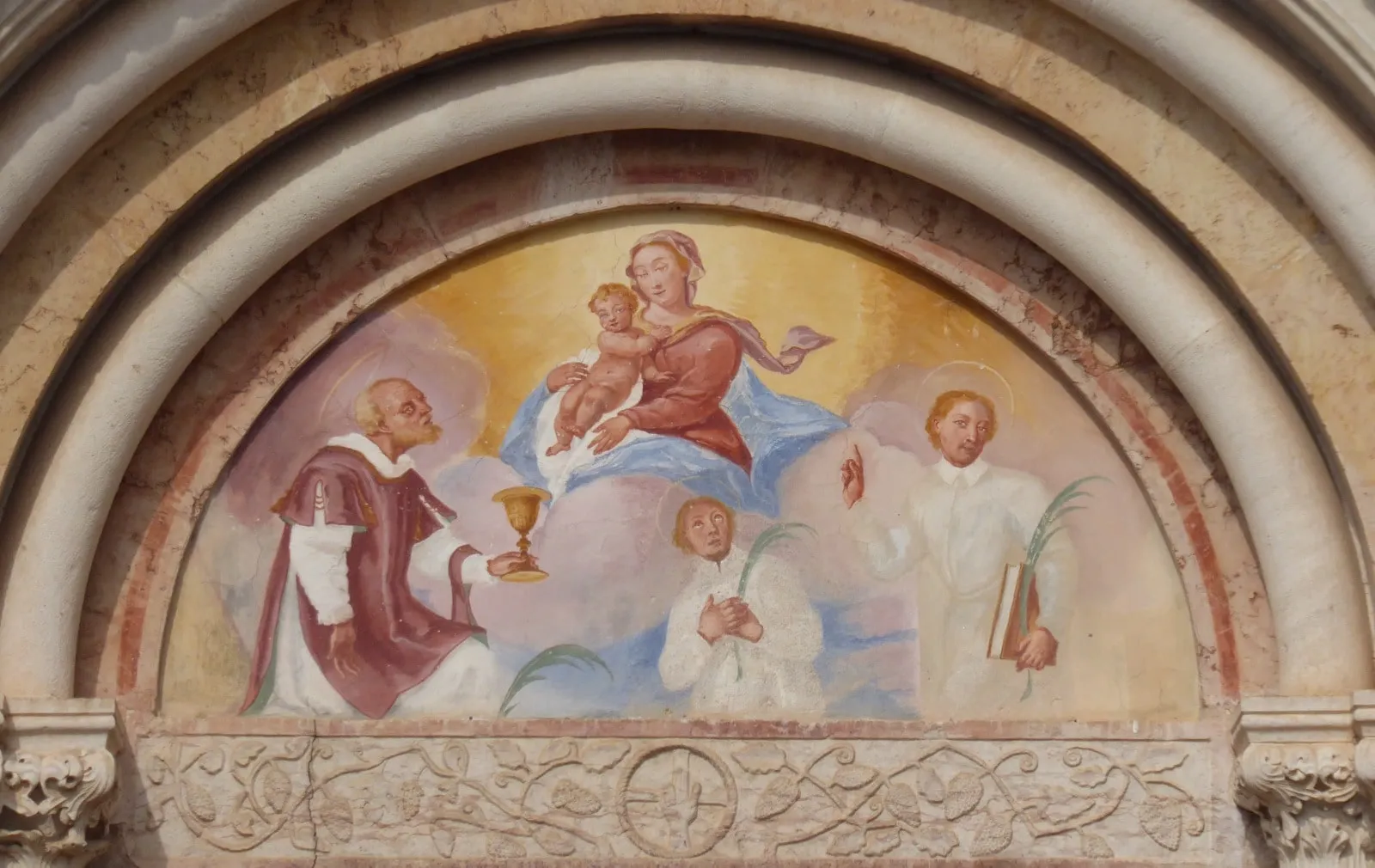
The Basilica of the Holy Martyrs in Sanzeno, Italy, is dedicated to Saints Sisinnio, Martirio, and Alessandro, three early Christian missionaries who played a crucial role in the Christianization of the region. These martyrs, believed to be from Cappadocia, were sent by Bishop Vigilio of Trento to spread Christianity in the Val di Non. Their mission, however, faced resistance from the local population, which was deeply rooted in pagan beliefs and rituals, particularly those surrounding agriculture and fertility.
The Martyrs’ Mission and Death
Upon their arrival in Anaunia (the ancient name for the Val di Non), the three missionaries formed a small monastic community and began preaching Christianity. Unfortunately, the local people, still devoted to pagan traditions, rejected their message. The missionaries’ efforts to convert the population were met with hostility, culminating in their tragic martyrdom. On May 29, 397, during a pagan religious festival known as Ambarvalia, which was intended to ensure the fertility of the fields and the harvest, Sisinnio, Martirio, and Alessandro were executed by being burned at the stake in the locality of Mecla, now known as Sanzeno. Their deaths symbolized their unwavering faith in the face of brutal persecution.
The 13th Century Romanesque Church
In the years following their martyrdom, the site of their sacrifice became a place of veneration. A Romanesque church was built in the 13th century on the very location where the three martyrs were executed. This church stood as a tribute to their memory and became an important site of pilgrimage.
Discovery and Construction of the Current Basilica
On May 25, 1472, Prince-Bishop Johann Hinderbach discovered a wooden box beneath the altar of the old church. Inside the box were soil and ash from the burning of the martyrs, further deepening the significance of the site. Moved by this discovery, Hinderbach decided to embark on the construction of a new, larger church to honor the martyrs and accommodate the growing number of pilgrims. Construction of the basilica began in 1480, using the perimeter walls of the previous Romanesque church as the foundation. Over the years, the basilica was gradually expanded, and the facade was clad in stone in 1542, completing the structure we see today. The basilica, with its impressive architecture and sacred relics, continues to stand as a testament to the courage and faith of the three martyrs and serves as a central place of worship in the region.
Architecture of Basilica of St. Sisinnius, St. Martirius and St. Alexander Sanzeno, Italy
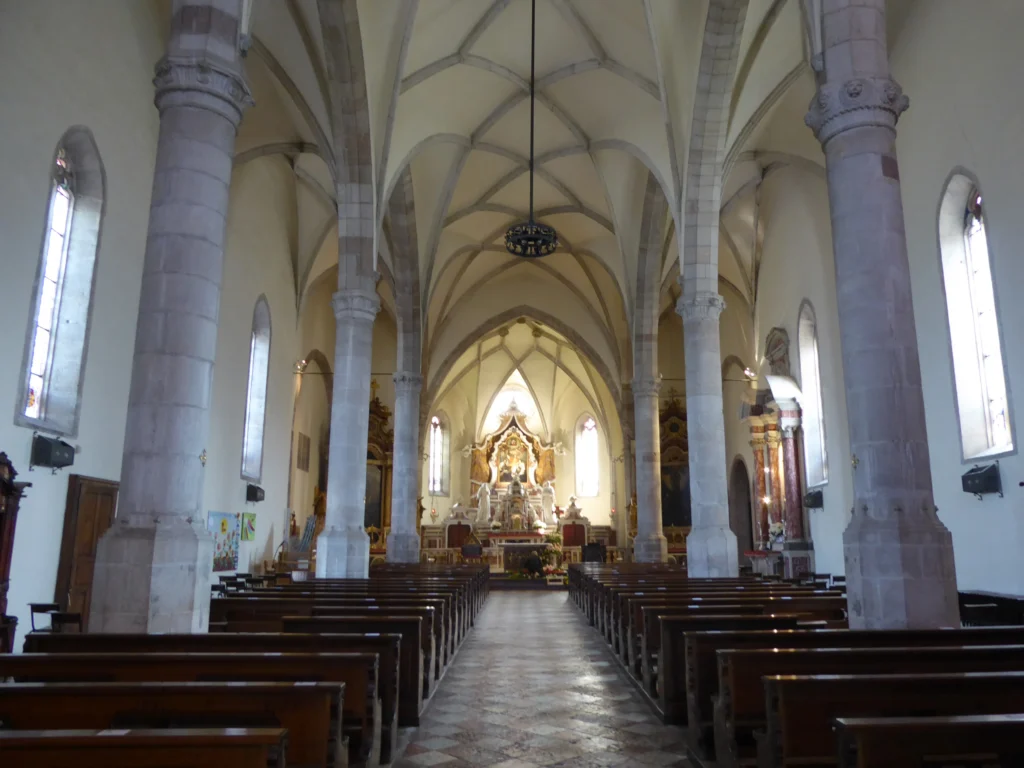
Exterior Design
The basilica’s facade mirrors the structure of the three internal naves, dividing the exterior into three distinct sections or fields. The central field is adorned with a large, intricate rose window designed by the architect Giacomo Mookadoha, which enhances the aesthetic appeal of the building. Above the main portal, a lunette depicts an image of the Madonna with the three martyrs, emphasizing the basilica’s dedication to these saints. Above the portal, you can also find the coats of arms of Prince-Bishop Hinderbach and Bishop Frundsberg, commemorating their significant roles in the church’s history. The bronze doors, created by Livio Conta in 1997, further enrich the basilica’s exterior. These doors beautifully depict the story of the three martyrs, contributing to the narrative and historical significance of the church. In the south-east corner of the basilica stands the bell tower, which dates back to the ancient Romanesque church. The tower is characterized by its arched triple lancet windows, maintaining the architectural style of the earlier structure.
The Chapel of the Holy Martyrs

Located in the right nave, the Chapel of the Holy Martyrs dates back to the original Romanesque church. This sacred space is protected by a wrought iron gate, ensuring its preservation. On the left wall of the chapel, a 12th-century fresco depicts the three martyrs surrounded by figures from both the Old and New Testaments. Additionally, the fresco includes symbols of the months of the year, adding a unique touch to this historical artwork. In the center of the chapel stands the ark made of red Trento stone, which contains the remains of the martyrs’ pyre. This precious relic further connects the basilica to its founding history and the martyrdom of Sisinnio, Martirio, and Alessandro.
Relics and Other Sacred Items
In addition to the relics housed in the marble urn within the chapel, the basilica also preserves another urn containing small ribs, which was donated in 1927 by the Milanese Basilica of San Simpliciano. These additional relics further enhance the spiritual significance of the basilica, making it a key site for pilgrims and worshippers alike. The Basilica of the Holy Martyrs combines architectural beauty with a deep sense of history, offering a place of reflection and reverence for all who visit. The careful preservation of its sacred relics and the integration of various artistic elements highlight the basilica’s importance as a spiritual and cultural landmark.
Feast Day
Feast Day : 29 May
The feast day of the Basilica of St. Sisinnius, St. Martirius, and St. Alexander in Sanzeno, Italy is celebrated on May 29. This date commemorates the martyrdom of Saints Sisinnio, Martirio, and Alessandro, who were executed on this day in 397 AD during a pagan religious festival in the locality of Mecla (now Sanzeno).
Church Mass Timing
Monday : 8:00 AM.
Tuesday : 8:00 AM.
Wednesday : 8:00 AM.
Thursday : 8:00 AM.
Friday : 8:00 AM.
Saturday : 8:00 AM., 8:00 PM.
Sunday : 10:00 AM.
Church Opening Time:
Monday : 9:00 am – 6:30 pm.
Tuesday : 9:00 am – 6:30 pm.
Wednesday : 9:00 am – 6:30 pm.
Thursday : 9:00 am – 6:30 pm.
Friday : 9:00 am – 6:30 pm.
Saturday : 9:00 am – 6:30 pm.
Sunday : 9:00 am – 6:30 pm.
Contact Info
Address :
dei Santi Martiri Anauniensi, 54, 38010 Sanzeno TN, Italy.
Phone : +39 0463 434134
Accommodations
Connectivities
Airway
Basilica of St. Sisinnius, St. Martirius and St. Alexander Sanzeno, Italy, to Villafranca Airport (VRN), distance between 1 hr 27 min (132.7 km) via A22/E45.
Railway
Basilica of St. Sisinnius, St. Martirius and St. Alexander Sanzeno, Italy, to Verona Porta Nuova Piazzale XXV Aprile, Verona, VR, Italy, distance between 1 hr 32 min (134.6 km) via A22/E45.


